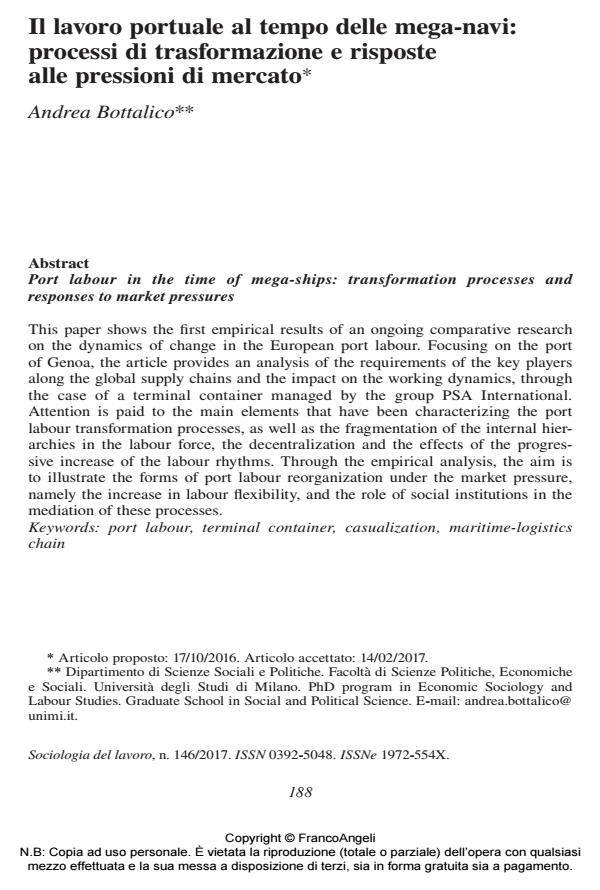Il lavoro portuale al tempo delle mega-navi: processi di trasformazione e risposte alle pressioni di mercato
Titolo Rivista SOCIOLOGIA DEL LAVORO
Autori/Curatori Andrea Bottalico
Anno di pubblicazione 2017 Fascicolo 2017/146
Lingua Italiano Numero pagine 17 P. 188-204 Dimensione file 120 KB
DOI 10.3280/SL2017-146012
Il DOI è il codice a barre della proprietà intellettuale: per saperne di più
clicca qui
Qui sotto puoi vedere in anteprima la prima pagina di questo articolo.
Se questo articolo ti interessa, lo puoi acquistare (e scaricare in formato pdf) seguendo le facili indicazioni per acquistare il download credit. Acquista Download Credits per scaricare questo Articolo in formato PDF

FrancoAngeli è membro della Publishers International Linking Association, Inc (PILA)associazione indipendente e non profit per facilitare (attraverso i servizi tecnologici implementati da CrossRef.org) l’accesso degli studiosi ai contenuti digitali nelle pubblicazioni professionali e scientifiche
This paper shows the first empirical results of an ongoing comparative research on the dynamics of change in the European port labour. Focusing on the port of Genoa, the article provides an analysis of the requirements of the key players along the global supply chains and the impact on the working dynamics, through the case of a terminal container managed by the group PSA International. Attention is paid to the main elements that have been characterizing the port labour transformation processes, as well as the fragmentation of the internal hierarchies in the labour force, the decentralization and the effects of the progressive increase of the labour rhythms. Through the empirical analysis, the aim is to illustrate the forms of port labour reorganization under the market pressure, namely the increase in labour flexibility, and the role of social institutions in the mediation of these processes.
Parole chiave:Lavoro Portuale, Terminal Container, Casualizzazione, Catena Marittimo-Logistica
Andrea Bottalico, Il lavoro portuale al tempo delle mega-navi: processi di trasformazione e risposte alle pressioni di mercato in "SOCIOLOGIA DEL LAVORO " 146/2017, pp 188-204, DOI: 10.3280/SL2017-146012